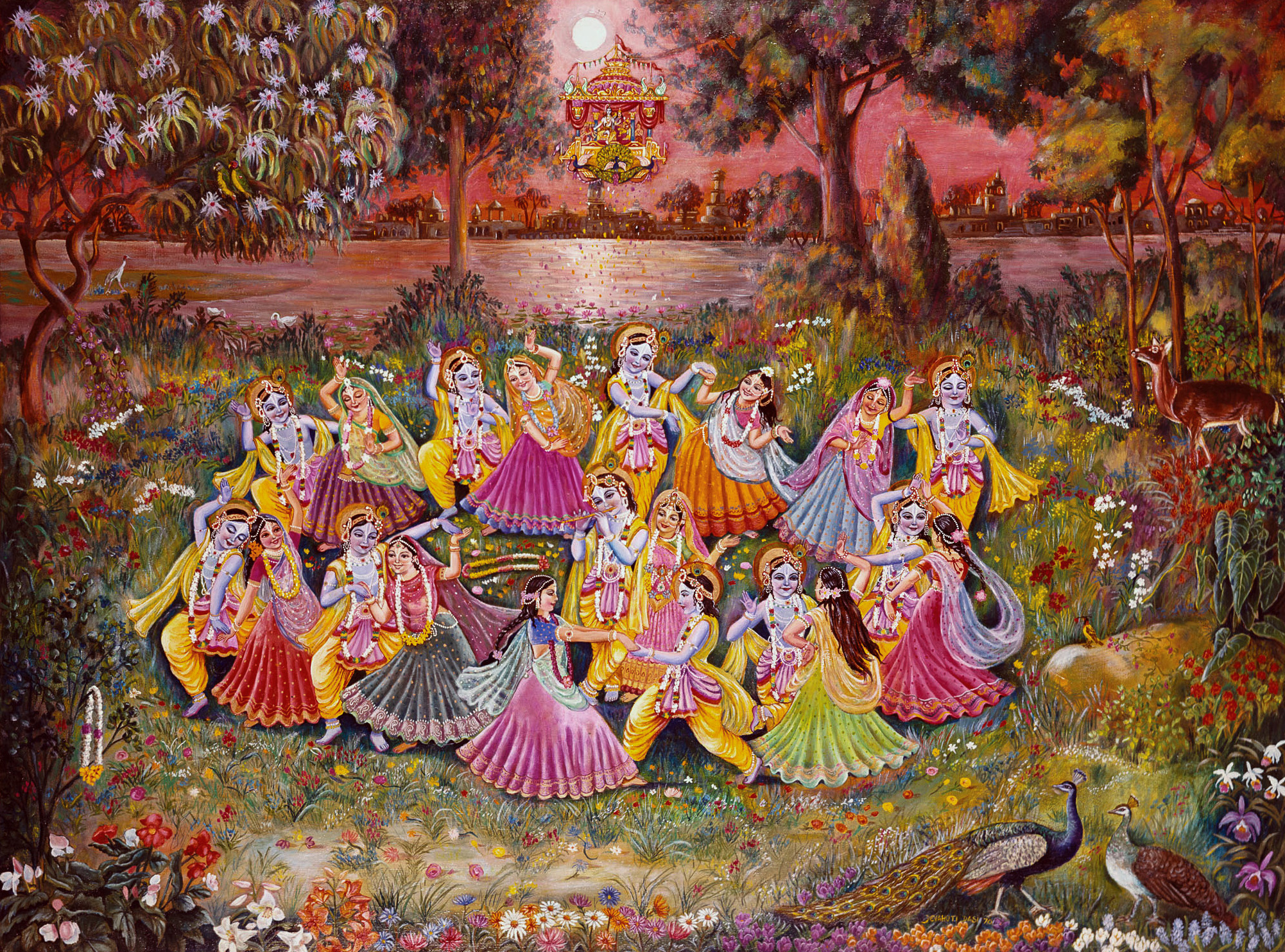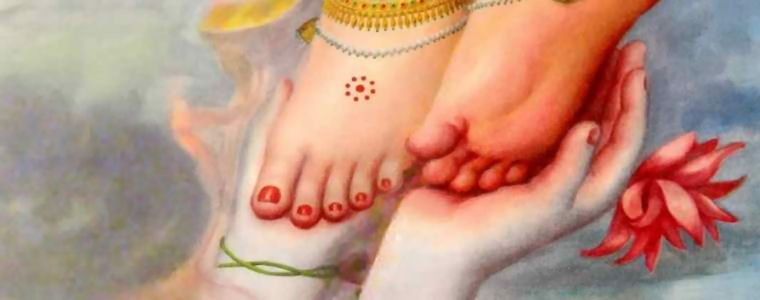About Jayadeva Goswami & Gita Govinda
The primary source of Odissi dance performances are the songs composed by the Vaisnava saint Jayadeva Goswami. His collection of poems written in praise of Lord Krishna called the Gita-Govinda are one of the most revered Vedic literatures. The Sanskrit prayers are sung every day at the temple of Lord Jagannatha.
Three hundred years before the appearance of Shri Chaitanya Mahaprabhu, Sri Jayadeva Goswami served as the court pandita of Sri Lakshmana Sena, King of Bengal. Jayadeva and Padmavati (his wife and an expert dancer) used to worship Lord Sri Krishna with single-minded devotion. After some time, he left the opulent royal life to live peacefully in a grass hut in Champahatti, Navadwipa. Here Jayadeva wrote Gita Govinda.

One day while working on Gita Govinda Jayadeva felt inspired to write, “Krishna bows down to touch the lotus feet of Shrimati Radharani.” Jayadeva was hesitant to say something which might diminish Lord Krishna’s position as the Supreme Personality of Godhead.
He went to refresh himself with a Ganges bath before honoring Radha-Madhava’s Maha-Prasadam. In his absence, Krishna Himself, disguised as Jayadeva, wrote a line in the Gita Govinda: dehi pada pallavam udaram. The Lord also accepted Prasadam from Padmavati. Upon returning, Jayadeva was astonished to see the line. Understanding the mystery, Jayadeva cried in spiritual joy and said, “Padmavati, we are most fortunate. Shri Krishna Himself has written the line, dehi pada pallavam udaram, and taken Prasadam from your hand.”
The Gita Govinda has 12 chapters and each of the chapters is further subdivided into 24 divisions called Prabandhas. Prabandhas contain couplets grouped into eights in which the Rasa or love of Sri Sri Radha and Krishna are depicted. These are called Ashtapadis. The Asthapadis form the core of Indian classical dancing, something that has been continuing since the days of Devadasis.
“Gita-govinda is a special poetry book, full of transcendental mellows of devotional service, and it describes the exalted pastimes of the Supreme Brahman. There is no other such book in the world.” -Bhaktivinode Thakur
However, Bhaktivinode Thakur also advises:
“Since the ordinary readers cannot realize the conjugal mellows of the Supreme Lord and since they are fond of material enjoyment, their study of Sri Gita-govinda is not perfect.” -(Bhaktivinoda Thakura, Sajjana-tosani 7/2)

“The Gita-govinda, the loving affairs of Radha and Krsna, it is not for the neophyte student… If you are actually advancing in devotional service, then the symptom will be that you’ll have no more material hankerings.” That is real. So if you actually hear about Krsna’s pastimes with Radharani, then hrd-roga-kaman apahinoti, then our heart disease, lusty desires, will vanish. That is the result. I have repeatedly said. So if you become more lusty by seeing the pastimes of Krsna with Radharani or hearing, that means you are not fit. Stop it. Stop it. Don’t be foolish.”(A.C. Bhaktivedanta Swami Prabhupada, Lecture on Caitanya-caritamrta Adi-lila 1, 6, Mayapura, March 30th 1975)
One should approach hearing about these topmost pastimes of the Lord in a submissive and humble mood. Witnessing Sujata Mohapatra and her disciples perform the Odissi dances of the Gita Govinda composed by Guru Kelucharan is a rare gem to be cherished and upheld with the highest purity and respect.

